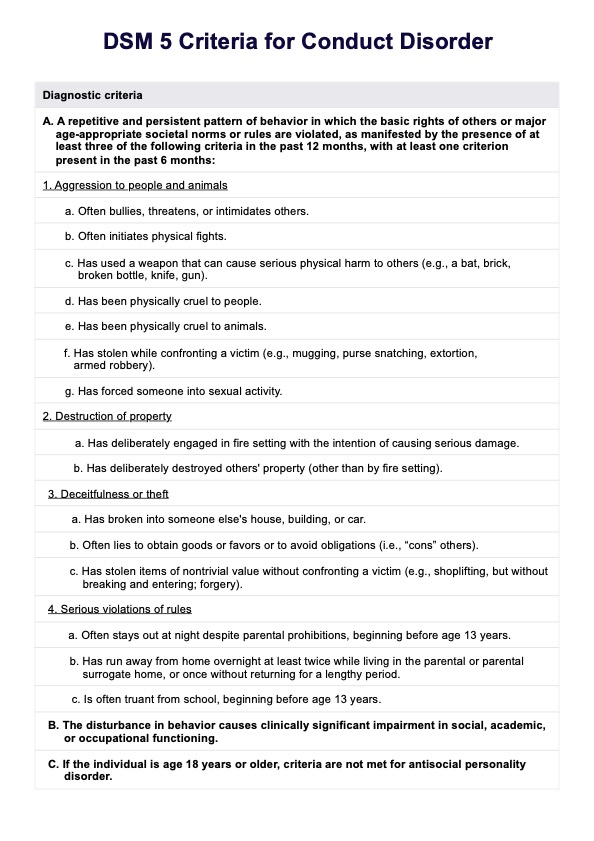The criteria for conduct disorder include a repetitive and persistent pattern of behavior that violates the basic rights of others or major age-appropriate societal norms or rules, with at least three of the specified criteria present in the past 12 months.

DSM 5 Criteria for Conduct Disorder
Get the DSM 5 Criteria for Conduct Disorder. Learn diagnosis, treatment, & other relevant information with our guide.
DSM 5 Criteria for Conduct Disorder Template
Commonly asked questions
No, conduct disorder and antisocial personality disorder (ASPD) are not the same. Conduct disorder is diagnosed in children and adolescents, while ASPD is diagnosed in adults. However, individuals with conduct disorder are at an increased risk of developing ASPD in adulthood.
IED involves sudden, intense outbursts of anger or aggression, ADHD is marked by persistent inattention, hyperactivity, and impulsivity, while CD is characterized by a consistent pattern of rule-breaking, aggression, and violating the rights of others.
EHR and practice management software
Get started for free
*No credit card required
Free
$0/usd
Unlimited clients
Telehealth
1GB of storage
Client portal text
Automated billing and online payments











